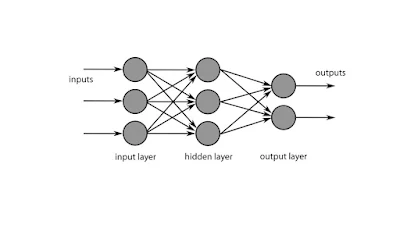This post will help you to understand about Deep Learning in Machine Learning.
If you are interested in learning, Request you to go through the below recommended tutorial.
DevOps Full Course Tutorial for Beginners - DevOps Free Training Online
Docker Full Course Tutorial for Beginners - Docker Free Training Online
Kubernetes Full Course Tutorial for Beginners - Kubernetes Free Training Online
Ansible Full Course Tutorial for Beginners - Ansible Free Training Online
Openstack Full Course Tutorial for Beginners - Openstack Free Training Online
Deep Learning in Machine Learning
Introduction
Deep learning is a subfield of machine learning that utilizes artificial neural networks with several layers of nodes to extract complex features from data. It has gained immense popularity in recent years due to its ability to achieve state-of-the-art performance on a variety of tasks such as image and speech recognition, natural language processing, and autonomous driving. In this article, we will explore deep learning in machine learning, covering the basics, architecture, types of networks, and their applications.
Basics of Deep Learning
Deep learning is based on the concept of artificial neural networks (ANNs). ANNs are composed of interconnected nodes, which mimic the behavior of neurons in the human brain. Each node receives input from other nodes, performs a calculation, and sends output to other nodes. The nodes are arranged in layers, with each layer performing a specific operation. The input layer receives the raw data, and the output layer produces the final output.
The goal of deep learning is to learn complex representations of data by stacking multiple layers of nodes on top of each other. The layers in the middle are called hidden layers because they are not directly connected to the input or output. Deep neural networks can have hundreds or even thousands of hidden layers, which enables them to learn complex patterns and relationships in the data.
Architecture of Deep Neural Networks
The architecture of a deep neural network is determined by the number of layers, the number of nodes in each layer, and the connections between the nodes. There are several types of deep neural network architectures, each with its strengths and weaknesses.
Feedforward Neural Networks
Feedforward neural networks are the most basic type of deep neural network. They consist of an input layer, output layer and one or more hidden layers. The nodes in each layer are fully connected to the nodes in the adjacent layer, and the information flows in a single direction from the input layer to the output layer. Feedforward neural networks are commonly used for image and speech recognition.
Recurrent Neural Networks
Recurrent neural networks (RNNs) are designed to process sequential data such as time series or natural language. They have loops that allow information to be passed from one time step to the next. This enables them to capture the temporal dependencies in the data. RNNs are commonly used for speech recognition, machine translation, and sentiment analysis.
Convolutional Neural Networks
Convolutional neural networks (CNNs) are designed to process images and other 2D data. They consist of multiple layers of convolutional and pooling operations. The convolutional layers apply filters to the input, which allows them to capture local patterns in the image. The pooling layers reduce the dimensionality of the output, which helps to reduce overfitting. CNNs are commonly used for image classification, object detection, and face recognition.
Generative Adversarial Networks
Generative adversarial networks (GANs) are a type of deep neural network that can generate new data that is similar to the training data. GANs consist of two networks: that are a generator and a discriminator. The generator creates new data, and the discriminator tries to distinguish the generated data from the real data. The generator is trained to create data that fools the discriminator. GANs are commonly used for generating images, videos, and music.
Applications of Deep Learning
Deep learning has numerous applications in various fields, including:
Computer Vision
Computer vision is one of the most popular applications of deep learning. Deep neural networks can learn to recognize and classify objects in images and videos. They can also detect and track faces, estimate poses, and generate realistic images.
Natural Language Processing
Natural language processing (NLP) is another popular application of deep learning. Deep neural networks can learn to translate text, answer questions, and summarize text. They can also be used for sentiment analysis, named entity recognition, and speech recognition.
Autonomous Driving
Autonomous driving is an emerging field that heavily relies on deep learning. Deep neural networks can be used to detect and track objects, such as pedestrians and other vehicles, in real-time. They can also be used for lane detection, traffic sign recognition, and mapping.
Healthcare
Deep learning is also being used in healthcare to diagnose diseases, predict patient outcomes, and analyze medical images. Deep neural networks can learn to detect cancer cells in medical images, predict patient readmission rates, and assist with drug discovery.
Finance
Deep learning is being used in finance to predict stock prices, identify fraud, and assist with risk management. Deep neural networks can learn to identify patterns in financial data, predict market trends, and analyze credit risk.
Conclusion
Deep learning is a subfield of machine learning that has revolutionized the field of artificial intelligence. Deep neural networks have achieved state-of-the-art performance on a variety of tasks, including computer vision, natural language processing, autonomous driving, healthcare, and finance. There are several types of deep neural network architectures, each with its strengths and weaknesses. The choice of architecture depends on the nature of the problem and the type of data. As deep learning continues to advance, we can expect to see more applications in various fields, as well as new breakthroughs in the field of artificial intelligence.
That’s it for this post, Hope you have got an idea about Deep Learning in Machine Learning.












0 Comments